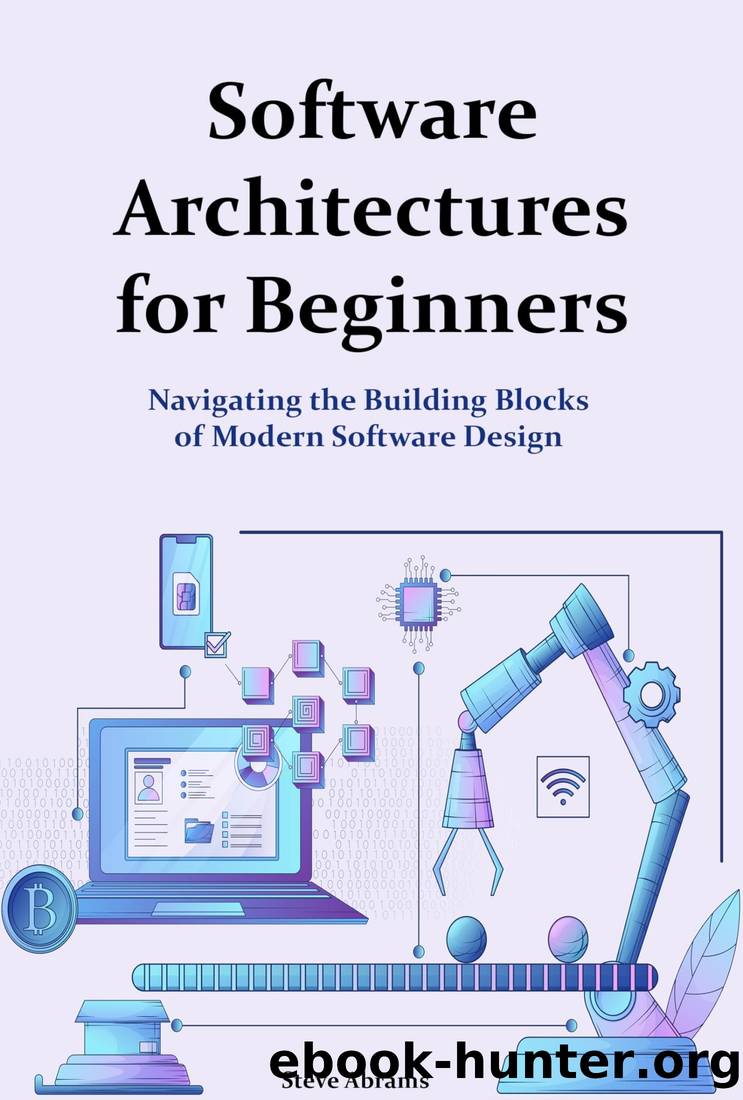Software Architectures for Beginners: Navigating the Building Blocks of Modern Software Design by Steve Abrams

Author:Steve Abrams
Language: eng
Format: mobi
Published: 2024-05-02T04:00:00+00:00
Chapter 6: Role of a Software Architect
Responsibilities and Skills
The role of a Software Architect is crucial in the realm of software development, acting as a key pivot between the conceptual and technical realms. A Software Architect is responsible for making high-level design choices and dictating technical standards, including software coding standards, tools, and platforms. Their primary goal is to develop technical frameworks and infrastructure that cater to specific business or client requirements while ensuring that the software solutions are scalable, sustainable, and secure.
Responsibilities of a Software Architect
1. Design and Architectural Planning: The core responsibility of a Software Architect is to create complex software architectures that solve specific business problems. They need to define the softwareâs structure, its components, and their interfaces, along with the data that flows between these components. They are also involved in selecting appropriate design patterns, frameworks, and platforms that suit the projectâs needs.
2. Stakeholder Communication: Software Architects must frequently liaise with various stakeholders including business managers, project managers, developers, and clients to ensure that the proposed solutions align with business goals and user requirements. They translate technical jargon into laymanâs terms and help non-technical stakeholders understand the architectural choices and their impacts.
3. Leading Development Teams: While they may not directly involve in day-to-day coding, Software Architects are responsible for guiding and mentoring development teams. They provide technical leadership, enforce best practices, review code, and ensure that the team adheres to the defined architecture.
4. Ensuring System Quality: They are tasked with ensuring the system is robust, secure, and efficient. This involves defining and overseeing testing strategies including performance testing, integration testing, and more. They also play a crucial role in troubleshooting and resolving high-level technical issues.
5. Continuous Improvement: Technology evolves rapidly, and so must the systems. Software Architects need to stay updated with the latest technologies and trends that could enhance their architectural designs. They assess existing systems for improvement opportunities, leading the charge on refactoring and updates to utilize new, more efficient technologies or methodologies.
Skills Required for a Software Architect
1. Deep Technical Expertise: A strong background in software development is a must, with expertise in multiple programming languages, databases, operating systems, and enterprise architectures. Familiarity with various architectural styles (like microservices, serverless, etc.) and frameworks is essential.
2. Analytical and Conceptual Thinking: They must have the ability to visualize and articulate complex systems, foresee potential issues, and devise effective solutions. Good analytical skills help in understanding the impact of architecture decisions on system performance and maintenance.
3. Communication and Leadership Skills: Effective communication is critical, as Architects need to explain their visions to others and influence decision-making processes without direct authority. Leadership skills help them guide and inspire their teams.
4. Problem-Solving Skills: The ability to swiftly diagnose problems and strategize solutions is key, particularly in high-pressure environments where quick turnaround is required to address system failures or security breaches.
5. Adaptability and Learning Agility: Technology changes rapidly, and successful Software Architects must adapt quickly and be lifelong learners, continuously updating their knowledge and skills to stay relevant.
A Software Architect
Download
This site does not store any files on its server. We only index and link to content provided by other sites. Please contact the content providers to delete copyright contents if any and email us, we'll remove relevant links or contents immediately.
Sass and Compass in Action by Wynn Netherland Nathan Weizenbaum Chris Eppstein Brandon Mathis(11621)
Implementing Enterprise Observability for Success by Manisha Agrawal and Karun Krishnannair(8223)
Supercharging Productivity with Trello by Brittany Joiner(7466)
Mastering Tableau 2023 - Fourth Edition by Marleen Meier(7224)
Inkscape by Example by István Szép(7110)
Visualize Complex Processes with Microsoft Visio by David J Parker & Šenaj Lelić(6798)
Build Stunning Real-time VFX with Unreal Engine 5 by Hrishikesh Andurlekar(5821)
Design Made Easy with Inkscape by Christopher Rogers(5078)
Customizing Microsoft Teams by Gopi Kondameda(4626)
Business Intelligence Career Master Plan by Eduardo Chavez & Danny Moncada(4580)
Extending Microsoft Power Apps with Power Apps Component Framework by Danish Naglekar(4220)
Salesforce Platform Enterprise Architecture - Fourth Edition by Andrew Fawcett(4098)
Pandas Cookbook by Theodore Petrou(4078)
Linux Device Driver Development Cookbook by Rodolfo Giometti(4031)
The Tableau Workshop by Sumit Gupta Sylvester Pinto Shweta Sankhe-Savale JC Gillet and Kenneth Michael Cherven(3885)
Exploring Microsoft Excel's Hidden Treasures by David Ringstrom(3379)
TCP IP by Todd Lammle(3138)
Applied Predictive Modeling by Max Kuhn & Kjell Johnson(3025)
Drawing Shortcuts: Developing Quick Drawing Skills Using Today's Technology by Leggitt Jim(3008)
